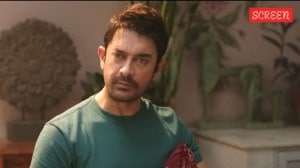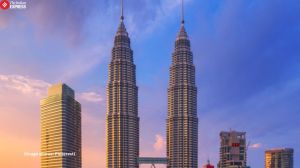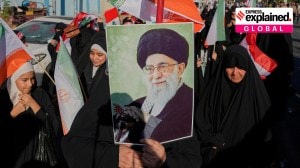The nuclear and the developmental
We had argued that in a democratic society the practice of producing discussion documents is very useful because it encourages a construct...

We had argued that in a democratic society the practice of producing discussion documents is very useful because it encourages a constructive dialogue between government and civil society. The electricity tariff document was a good step in that direction. One of its strengths was an attempt at presenting alternatives for discussion and adoption.
 Another was an understanding of the complexity of the problem and therefore a genuine attempt at deriving solutions through interactive debate. The report of the National Security Advisory Board on the Nuclear Doctrine is another discussion paper, released on August 17, a few weeks before the elections.
Another was an understanding of the complexity of the problem and therefore a genuine attempt at deriving solutions through interactive debate. The report of the National Security Advisory Board on the Nuclear Doctrine is another discussion paper, released on August 17, a few weeks before the elections.The style of this discussion paper is different. It is in the nature of a dictat. The Board is not interested in alternatives. The problem is complex, but it has all the answers. It states objectives, but if it thinks of complexity, it does not share it with its customers who are supposed to read its efforts. Thus “India’s security is an integral component of its development process.” But the meaning of this is not explained.
In this case it is the government which is encouraging a discussion. It has been clarified that the Board’s report is not the official policy as yet. And now the External Affairs Minister, according to a press report, has clarified that the concept of a “triad” of forces is not accepted policy and therefore presumably a subject of discussion. He is reported to have said that “a triad is not a perquisite for credibility.”
According to the Board, there is one way of achieving the developmental objectives. Minimum nuclear deterrence requires forc-es. “These forces will be based on a triad of aircraft, mobile land based missiles and sea based assets” and again these “forces will be enhan-ced by a combination of multiple redundant systems.” Interestingly, the Board does not give any reasoning to suggest th-at this is the only security option the country has.
In fact, at a serious level, there are two questions. One is whether alternatives exist and the other is the best of the existing alternatives. In terms of strategy, the Board does not make any mistake some hot heads do, and that is why it does not equate a particular action, say, testing of weapons, with a security strategy.
In my my P.C. Lal Memorial Lecture as the then minister of science and technology holding independent charge, also holding charge of parliamentary responsibilities for atomic energy, space and electronics, I had argued that “anybody who knows elementary game theory will appreciate that straightforward retaliatory strategies can be quite ineffective.” The Board is therefore working in the framework of a strategy, but it does not state alternatives, it does not discuss their merits and demerits and therefore it does not even pose, leave as-ide answer, the questi-on that its recommendations are the best for the country.
Perhaps the time before the el-ection was not the best time to do this, but even now it is not too late.
Behind the strategy of making full preparation, but not developing a large nuclear arsenal, there was a security doctrine. That, howev-er, is now history. Pokharan II was not a security strategy by itself and, although at that time some people didn’t think so, the government promised us a strategy. It is now clear that India has weaponised.
The security strategy is yet to come. Apart from weaponisation, I would suggest two imperatives. First, India must complete the nuclear fuel cycle. In fact the Kalpakkam experimental fast breeder fuel reactor working on thorium is technologically a much greater feat than the explosion itself.
The objective that we will now develop a 500 MW power station based on this technology and design work has already progressed is important. All long-term energy forecasts done for India, including by TERI, the French and Swiss think tanks, show that after taking advantage of rene-wable and clean coal technologies, India’s energy options need hydel and nuclear options in a big way. Our uranium reserves are limited, but once we develop the fast breeder thorium route, we will be well on the way to resolving our long-term energy crises. The technology has other obvious implications.
The second is that as we test the cryogenic engine next month, we will develop the capability to play around with two and a half to three tonnes in space. Again here our record is good. In terms of success in satellite launches, we compare well with Japan, China and Russia. It is idiotic of us to keep a very progressive space policy in the wraps, because our politicians and vested interests can’t finalise the Br-oadcasting Bill.
But all this will be resolved and the contribution that space can make to agriculture, communications, entertai-nment, software and resource based development lies ahead of us. Finally, the Commission I had set up on water perspectives has given its final report and raised the real issue of food security as our population stabilises in the next century.
These and technology for broad-based development are the imperatives with wh-ich we have to work. India has to constantly demonstrate that it can work at the cutting edge and succeed and those who deny this will be wrong. The last few years have been extraordinary in building bridges with countries like France and the US and stre-ngthening relations with Russia. It should be possible to build up a security doctrine which protects our essential interest as we negotiate the details.



























